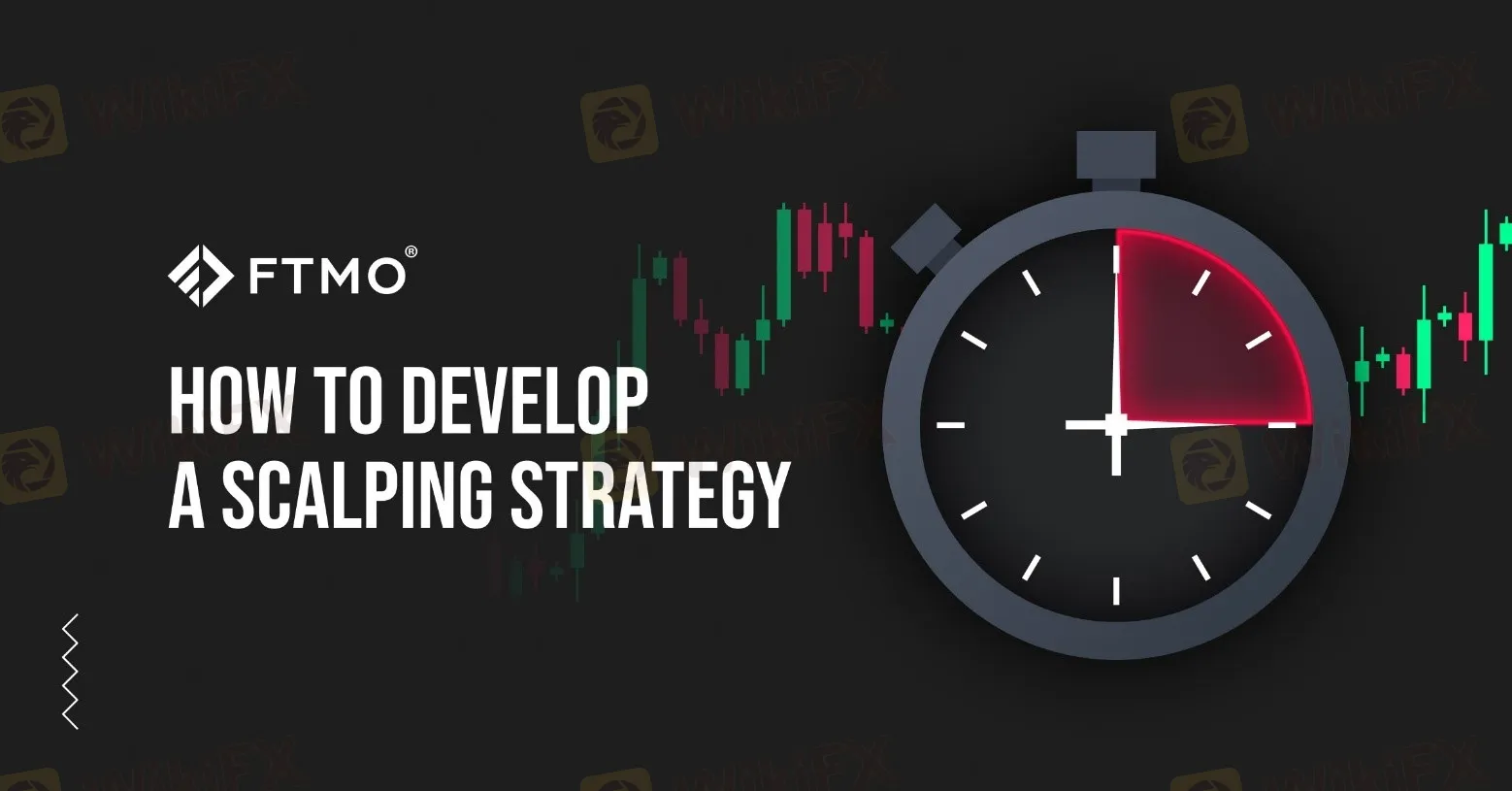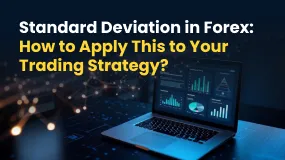简体中文
繁體中文
English
Pусский
日本語
ภาษาไทย
Tiếng Việt
Bahasa Indonesia
Español
हिन्दी
Filippiiniläinen
Français
Deutsch
Português
Türkçe
한국어
العربية
How to develop a scalping strategy
Abstract:Scalp trading, or scalping, is a popular trading strategy that has been around for a very long time. In this trading method, traders buy and sell stocks multiple times within a day for a small profit. While scalping can be profitable, it is also risky and requires good discipline, a reliable strategy, and a thorough understanding of the market.

Scalp trading, or scalping, is a popular trading strategy that has been around for a very long time. In this trading method, traders buy and sell stocks multiple times within a day for a small profit. While scalping can be profitable, it is also risky and requires good discipline, a reliable strategy, and a thorough understanding of the market.
Below are some tips with visual explanations on how to trade using the a scalping strategy:
Choose liquid markets
Scalping is most effective in highly liquid markets, and most of the time high liquidity markets are tied with specific market sessions. An example could be the market opening of the New York Stock Exchange when traders and investors begin the trading session. This is because the high trading volume in these markets ensures that price movements are frequent, making it easier to take advantage of them. Additionally, most prop firms/brokers or trading platforms have commission-free trading on indices and that is an advantage you can utilize for your benefit.
Example: Liquidity in terms of volume can be perfectly illustrated by the picture of the chart below. Instrument: US30.cash

Set Take Profit and Stop Loss orders
It's important to set a Take Profit and a Stop Loss order for each trade. This will help you minimize losses and take profits before the market reverses. As a scalper, you should aim to make small profits consistently throughout the day, rather than trying to make big gains from a single trade. Different traders have different settings for their SLs and TPs. To define your “exits”, you need to justify them. If you are just beginning with scalping, you may use predefined SL/TP levels.
Example: Here the trading strategy is based on Support and Resistance levels and entries are at the breakout from the range. Stop Loss is at the nearest resistance level (80 points) and Take Profit is twice as big as the Stop Loss in the absolute value (160 points).

Use technical analysis
Technical analysis is a crucial aspect of scalping. Use indicators such as moving averages, Bollinger Bands, and RSI to identify short-term trends and price movements. This will help you make quick and informed trading decisions.
Example: If we have a look at the previous example, the range breakout would not be fully confirmed because the volume in the market is not at the ideal level. Therefore, the entry would be refined as per the picture below.

Stay informed
Stay up to date with market news and events that can affect the securities you are trading. This will help you anticipate price movements and adjust your trading strategy accordingly. Generally, when you are scalping, you may want to avoid high-impact news as the volatility along with potentially wider spread can trigger your Stop Losses more often than your Take Profits. However, for the higher time frame bias and direction, high-impact news is a great indicator.
Example: Non-farm payrolls in USA is one of the major high-impact news that triggers high volatility.

Manage risk
Scalping is a high-risk strategy, so it's important to manage your risk carefully. Use a strict risk management plan, such as a maximum percentage of your account per trade or a maximum number of trades per day. Don't chase losses or let emotions cloud your judgment. Some may use SL/TP values in terms of money, others tend to set their SL/TP according to the percentage of their account. However, it is important to note that the percentage risks on your live accounts can differ from the funded accounts provided by prop firms.
Practice and refine your strategy
Like any trading strategy, scalping requires practice and refinement. Start with a demo account to practice your strategy and fine-tune it before risking real money. Keep track of your trades and analyse your results to identify areas for improvement.
Here are a few other examples of scalping strategies
Scalping with Moving Averages: In this approach, traders use multiple moving averages to identify short-term trends and trade in the direction of the prevailing trend. When a shorter-term moving average crosses above a longer-term moving average, it may indicate a buying opportunity, and vice versa for sell signals.
Scalping with the Order Flow: This strategy involves monitoring the order flow data, such as bid-ask spreads, order book depth, and volume, to identify short-term imbalances in buying and selling pressure. Traders look for opportunities to enter trades when there is a sudden surge in buying or selling activity.
It's worth noting that scalping requires a high level of skill, experience, and discipline. It also demands quick decision-making and the ability to manage risks effectively, as the profit margins per trade are typically small. Moreover, scalping often requires access to advanced trading platforms that offer fast execution and low latency to capitalize on short-term price movements.
Keep in mind that scalping may not be suitable for all traders. It requires active monitoring of the market and can be mentally demanding. Additionally, transaction costs, such as spreads and commissions, can have a significant impact on scalping profits, so traders need to consider these factors as well.
Finally, scalping can be a profitable trading strategy if executed properly. To succeed as a scalper, you need discipline, strategy, and a thorough understanding of the market just as you would need for an intra-day or swing trading. Continuously refine your strategy to improve your chances of success and remember that scalping is a high-risk strategy, so manage your risk carefully and don't let emotions cloud your judgement.

Disclaimer:
The views in this article only represent the author's personal views, and do not constitute investment advice on this platform. This platform does not guarantee the accuracy, completeness and timeliness of the information in the article, and will not be liable for any loss caused by the use of or reliance on the information in the article.
Read more

A Guide to Determining the Optimum Forex Leverage
Want to gain a wider forex market position control by investing a minimal amount? Consider using leverage in forex. It implies using borrowed funds to raise your trading position more than your cash balance can let you do it. Forex traders usually employ leverage to churn out profits from relatively small currency pair price changes. However, there is a double-edged sword with leverage since it can multiply profits as well as losses. Therefore, using leverage in the right amount is key for traders. Forex market leverage can be 50:1 to 100:1 or more, which remains significantly greater than the 2: leverage usually offered in equities and 15:1 leverage in futures.

Slippage in Forex Explained: Key Facts to Improve Your Trading Strategy
Have you witnessed a difference between the expected price of a trade and the price at which it is executed in real time? This might be due to slippage, which can happen at any time. However, it prevails mostly when the market remains highly volatile. At the same time, it can also happen during large order executions. Read on to know more about slippage, its impacts, and the strategies to rein in adverse effects.

Forex Trading Account Types and Their Features: Read This Insightful Guide
Want to open a forex account to enjoy the thrill of compounding returns? You should first know the various forex trading account types. Choosing the right option from the list of forex accounts is critical to experiencing a hassle-free and successful trading journey. Forex brokers design trading accounts based on your needs, trading experience, and financial goals. Therefore, understanding each forex trading account type and its key features becomes essential.. This will help you make the right choice. In this article, we have discussed everything about forex accounts. Take a look!

Standard Deviation in Forex: How to Apply This to Your Trading Strategy?
Do you recall the concept of standard deviation being taught in your school days? The concept, which measures the variation within a set of data points relative to the mean average of the dataset. A greater standard deviation hints at higher variability. On the other hand, a lower standard deviation means lower variability from the mean. But what is standard deviation in forex, and how can you apply it to your trading strategy? This is what we will discuss here.
WikiFX Broker
Latest News
Angel one 2025 Review & Complaints
Latest FCA Daily Alerts and Consumer Warnings for 2025
Webull Widens Crypto Futures with Coinbase Derivatives
Is Nash Markets Regulated or Risk? Truth About Nash Markets’ License & Withdrawal Issues
CySEC Blocks Certification Access to Combat Advisor Impersonation
Exclusive Markets Under the Scanner: Traders Report High Swap Charges, Deposit Discrepancies & More
Pinched By Penny Shortage, US Retailers Beg Congress To Step In
PINAKINE Broker Review: A Complete Look at Its Services and Risks
Voices of the Golden Insight Award Jury - Simon So, Chief Experience Officer of Hantec Financial
The United States Outgrows All Its Major Peers
Currency Calculator




